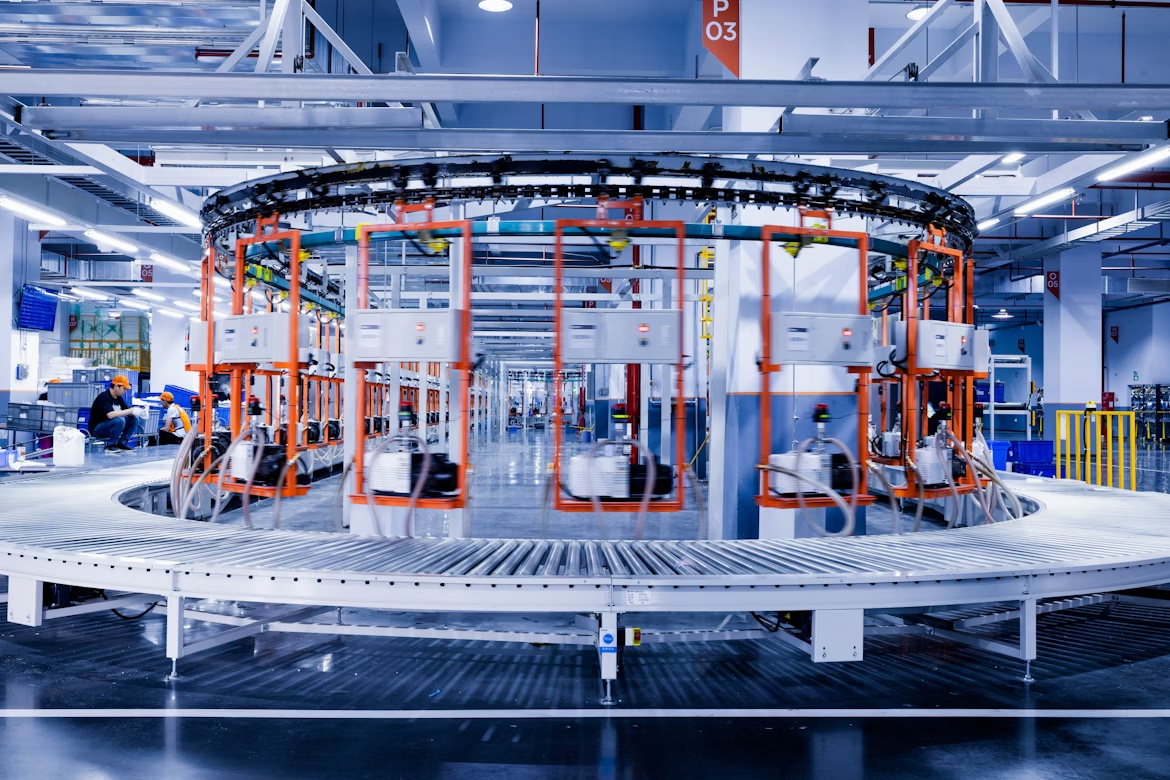The production process, once labor-intensive and time-consuming, has undergone significant transformation with recent innovations. Three key advancements have revolutionized production, accelerating efficiency and reducing reliance on manpower.
Read on to learn more about these three innovations that reshape the production landscape.
1. Additive Manufacturing (3D Printing)
Additive Manufacturing, also known as 3D printing, is a cutting-edge production method that constructs objects layer by layer from digital designs. Unlike traditional subtractive manufacturing processes, which involve removing material from a solid block, 3D printing adds material precisely where needed, resulting in highly customized and intricate objects.
Here are three benefits of additive manufacturing:
Versatility: Additive manufacturing can produce a wide range of objects, from beer tanks to prototypes and spare parts to complex components, across various industries. This versatility allows manufacturers to explore new product designs and applications that were previously challenging or impossible to create with traditional manufacturing methods. The ability to quickly iterate and produce customized products has opened up new opportunities for innovation and product differentiation.
Rapid Prototyping: By quickly creating prototypes directly from digital designs, manufacturers can iterate designs more efficiently, reducing time-to-market and development costs. Rapid prototyping enables designers and engineers to test and refine their ideas early in the development process, identifying and addressing potential issues before committing to full-scale production. This iterative approach leads to improved product quality, better user experiences, and faster innovation cycles.
Resource Efficiency: Additive manufacturing minimizes material waste compared to traditional manufacturing methods. It only uses the necessary amount of material required to build the object, reducing scrap and environmental impact. This resource efficiency not only saves costs but also aligns with sustainable manufacturing practices, contributing to a circular economy and reducing the carbon footprint of production processes.
2. Internet of Things (IoT)
The Internet of Things (IoT) has transformed the production process by enabling seamless connectivity and data exchange between machines, sensors, and systems. In manufacturing, IoT technologies allow for real-time monitoring, analysis, and optimization of production processes, leading to increased efficiency, productivity, and cost savings.
Moreover, IoT enables the implementation of smart manufacturing practices, such as Just-in-Time (JIT) production and demand-driven manufacturing, where production is aligned with real-time demand signals, minimizing inventory levels and maximizing resource utilization.
Examples of IoT Standards:
IPv6 over Low-Power Wireless Personal Area Networks (6LoWPAN): 6LoWPAN is a standard that enables the transmission of IPv6 packets over low-power, low-rate wireless networks. It is particularly well-suited for IoT applications where devices have limited power and processing capabilities, such as smart sensors and actuators in industrial settings. By allowing devices to communicate using the IP protocol, 6LoWPAN facilitates the integration of IoT devices into existing IP-based networks, enabling seamless data exchange and interoperability.
Zigbee: Zigbee is a wireless communication protocol designed for low-power, short-range applications, making it ideal for IoT devices in home automation, industrial control, and healthcare. Zigbee supports mesh networking, allowing devices to relay data through intermediate nodes, extending the overall range and reliability of the network. This feature is particularly useful in industrial settings where obstacles and interference can impact wireless communication.
Data Distribution Service (DDS): DDS is a data-centric publish-subscribe communication standard widely used in distributed systems, including IoT applications in industrial automation, smart grids, and transportation. DDS provides a reliable, scalable, and real-time communication framework for IoT devices, enabling efficient data exchange and ensuring the timely delivery of critical information.
3. AI and Machine Learning
Artificial Intelligence (AI) and Machine Learning (ML) are revolutionizing the production process by enabling predictive analytics, optimization, and automation. Here’s how AI and ML benefit the production process:
Predictive Maintenance: AI and ML algorithms analyze sensor data from machinery and equipment to predict when maintenance is required before failures occur. By detecting subtle patterns and anomalies in the data, these algorithms can identify potential issues before they escalate, allowing for proactive maintenance and reducing unplanned downtime. This predictive approach minimizes disruptions, improves equipment lifespan, and optimizes maintenance schedules, leading to significant cost savings and increased operational efficiency.
Quality Control: AI-powered vision systems inspect products in real-time, detecting defects and deviations from quality standards with high accuracy. Meanwhile, machine learning models learn from labeled data to recognize patterns associated with defects, enabling automated quality control processes. By automating and enhancing quality control, AI and ML technologies improve product quality, reduce rework and waste, and ensure consistent adherence to specifications.
Production Optimization: AI algorithms optimize production processes by analyzing vast amounts of data to identify bottlenecks, inefficiencies, and opportunities for improvement. These algorithms can continuously monitor and adjust various parameters, such as equipment settings, resource allocation, and process flows, to maximize throughput, minimize waste, and streamline operations. This data-driven approach enables continuous process improvement and optimizes resource utilization, leading to increased productivity and cost-effectiveness.
Supply Chain Management: AI and ML technologies optimize supply chain operations by analyzing data from various sources, including suppliers, logistics providers, and market demand. Predictive analytics anticipate changes in demand, identify supply chain risks, and optimize inventory levels to ensure timely delivery of goods while minimizing costs. AI-powered demand forecasting, route optimization, and inventory management improve supply chain visibility, agility, and resilience, enabling organizations to respond quickly to disruptions and dynamic market conditions.
Conclusion
Innovations like 3D printing, IoT, and AI are reshaping production, enhancing efficiency, and driving progress. Implementing these advancements is key to staying competitive and meeting the demands of modern manufacturing. By embracing these technologies, manufacturers can unlock new levels of productivity, quality, and resource optimization, while positioning themselves as leaders in their respective industries. As these innovations continue to evolve and mature, their impact on the production process will become even more profound, driving a transformative shift towards smarter, more sustainable, and more agile manufacturing operations.

